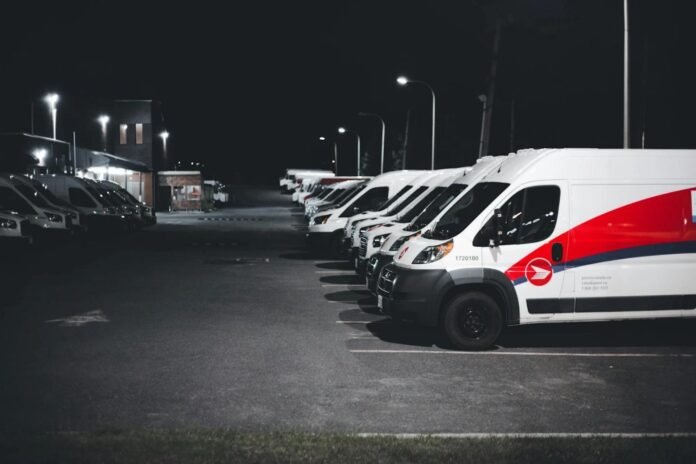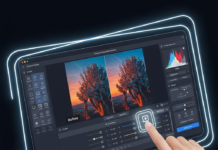In the fast-paced world of commercial fleet management, ensuring the safety, efficiency, and accountability of your vehicles and drivers is paramount. Integrating advanced technologies like GPS trackers and dash cams with GPS can significantly enhance your fleet operations. But with a plethora of options available, how do you determine which features are essential for your fleet? This comprehensive guide delves into the must-have features to consider when selecting these devices, ensuring you make informed decisions that align with your operational goals.
Table of Contents
1. High-Definition Video Quality
Clarity is crucial when reviewing footage from dash cams. High-definition (HD) video quality ensures that details such as license plates, road signs, and other critical elements are clearly visible. Modern dash cams often offer resolutions of 1080p or higher, providing crisp and detailed footage that can be invaluable in the event of an incident or for training purposes. For instance, in the construction industry, capturing clear video evidence can be instrumental in resolving disputes or analyzing on-site incidents.
Investing in HD dash cams also aids in driver training programs. Clear footage allows trainers to provide precise feedback, highlighting specific instances where drivers can improve. This not only enhances safety but also contributes to overall operational efficiency.
2. Wide-Angle Lens and Dual-Facing Cameras
A wide field of view (FOV) allows dash cams to capture more of the surroundings, reducing blind spots. Cameras with a FOV ranging from 140º to 180º are ideal for comprehensive coverage. For example, a 150º view can document incidents such as sudden lane changes or unexpected vehicle movements, which is particularly valuable in busy traffic or multi-lane highways.
Additionally, dual-facing cameras record both the road ahead and the vehicle’s interior, offering insights into driver behavior and ensuring adherence to safety protocols. This dual footage view helps prevent and correct risky driver behavior while also providing footage for incident context. By monitoring both the external environment and the driver’s actions, fleet managers can implement more effective training and safety programs.
3. GPS Tracking Integration
Integrating GPS tracking with dash cams provides real-time data on vehicle location, speed, and route history. This feature is invaluable for route optimization, monitoring unauthorized vehicle use, and providing context to recorded footage. For instance, understanding the exact location and speed during an incident can be crucial for investigations and insurance claims. Moreover, GPS tracking enables fleet managers to monitor driver behavior, such as speeding or idling, and implement corrective measures to improve fuel efficiency and reduce wear and tear on vehicles.
Furthermore, GPS tracking can assist in asset recovery in case of vehicle theft. By providing real-time location data, authorities can quickly locate and recover stolen vehicles, minimizing potential losses.
4. Real-Time Alerts and Notifications
Advanced dash cams equipped with GPS tracking can detect and alert drivers and fleet managers to risky behaviors such as hard braking, speeding, or sudden lane changes. Real-time audio or visual alerts enable immediate corrective actions, promoting safer driving habits and reducing the likelihood of accidents. For example, in-cab audio alerts can notify drivers when they exhibit unsafe behaviors, allowing them to adjust immediately. This proactive approach not only enhances safety but also helps in reducing potential liabilities and insurance costs.
Additionally, fleet managers can receive instant notifications about incidents, enabling swift response and support. This immediacy can be crucial in mitigating the impact of accidents and ensuring driver well-being.
5. Cloud Storage and Remote Access
Storing footage in the cloud ensures that critical data is preserved even if the physical device is damaged or tampered with. Cloud storage facilitates easy retrieval and sharing of footage, streamlining processes like insurance claims or legal proceedings. Additionally, remote access allows fleet managers to view live or recorded footage from any location, enhancing oversight and response times. For instance, in the event of an incident, managers can quickly access relevant footage to assess the situation and take appropriate action.
Cloud storage also eliminates the need for manual data retrieval, saving time and reducing the risk of data loss. With scalable storage options, fleets of all sizes can benefit from this feature without significant infrastructure investments.
6. AI-Powered Driver Assistance
Artificial Intelligence (AI) integration in dash cams can detect signs of driver fatigue, distraction, or other unsafe behaviors. By analyzing patterns such as eye movement or head position, these systems can provide real-time alerts to drivers, potentially preventing accidents before they occur. This proactive approach to safety is becoming increasingly prevalent in modern fleet management. For example, AI-powered dash cams can identify behaviors like yawning, drowsiness, or phone use, alerting drivers to refocus or take necessary breaks.
Implementing AI-driven assistance not only enhances safety but also contributes to a culture of accountability and continuous improvement among drivers. By addressing issues in real-time, fleets can reduce accident rates and associated costs.
7. Night Vision and Low-Light Performance
Driving conditions vary, and it’s essential that dash cams perform well in low-light or nighttime scenarios. Features like night vision enhance the camera’s ability to capture clear footage regardless of lighting conditions, ensuring that critical details are not lost during nighttime operations. This is particularly important for fleets operating during late hours or in areas with poor lighting. High-quality night vision capabilities ensure that incidents occurring at night are recorded with the same clarity as those in daylight.
Investing in dash cams with superior low-light performance can be the difference between capturing usable evidence and missing crucial details in the event.
8. Multi-Camera Systems for Comprehensive Coverage
For larger vehicles or those requiring extensive monitoring, multi-camera systems offer 360-degree coverage. These setups can include front, rear, side, and interior cameras, providing a holistic view of the vehicle’s environment and operations. Such comprehensive coverage is particularly beneficial for monitoring blind spots and ensuring cargo security. For instance, in construction fleets, having multiple camera angles can assist in maneuvering large vehicles in tight spaces, reducing the risk of collisions with obstacles or personnel.
Implementing multi-camera systems also aids in incident analysis. By having footage from various angles, fleet managers can reconstruct events accurately, determining fault and implementing measures to prevent future occurrences. This level of detail is invaluable for training purposes and for enhancing overall fleet safety protocols.
9. Robust Data Security and Privacy Controls
With the collection of video and location data, ensuring the security and privacy of this information is paramount. Opt for systems that offer encrypted data storage and transmission, along with customizable privacy settings to comply with regulations and protect sensitive information. For example, Geotab’s fleet camera systems provide customizable settings for privacy compliance, ensuring that data is handled responsibly and in accordance with legal requirements.
Implementing robust data security measures not only protects your organization from potential data breaches but also builds trust with drivers and clients. Clear policies on data usage and access, combined with secure systems, demonstrate a commitment to ethical data management and can enhance your company’s reputation.
10. User-Friendly Interface and Integration Capabilities
A system that’s difficult to use can hinder its effectiveness. Choose GPS trackers and dash cams with intuitive interfaces that allow for easy navigation and operation. Additionally, ensure that these devices can seamlessly integrate with your existing fleet management software, facilitating centralized monitoring and data analysis. For instance, systems like those offered by Lytx provide comprehensive integration capabilities, allowing for streamlined operations and data coherence across platforms.
An integrated system enhances operational efficiency by reducing the need for multiple disparate tools, allowing fleet managers to access all necessary information from a single platform. This consolidation aids in quicker decision-making and a more cohesive understanding of fleet operations.
11. Durability and Reliability
Commercial fleet vehicles often operate in challenging environments, making the durability and reliability of GPS trackers and dash cams crucial. Devices should be built to withstand extreme temperatures, vibrations, and other harsh conditions without compromising performance. For instance, dash cams used in construction fleets should be rugged enough to handle the dust, debris, and constant movement inherent in construction sites.
Investing in durable equipment reduces the frequency of replacements and maintenance, leading to cost savings in the long term. Reliable devices ensure continuous operation, providing consistent data and footage
Wrapping Up
In today’s competitive and safety-focused fleet landscape, investing in the right GPS tracker and dash cam with GPS setup is more than just a tech upgrade—it’s a smart business move. By choosing systems with the must-have features we’ve outlined, you gain better visibility, tighter control over operations, and greater protection for your drivers and assets. Whether you’re managing a handful of vehicles or an entire fleet, these tools help streamline your workflow, boost accountability, and reduce risks on the road.
Apart from that if you want to know about Enhanced Customer Service with GPS Tracking then please visit our Technology Category.
















